- Top
- Kumamoto University URA Office
- Press Release
KU - URA Office
Top > English PR
Home > 2016 Releases
Click on the images to go to the full release.
2021 – 2020 – 2019 – 2018 – 2017 – 2016
-
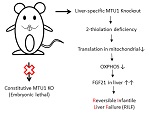
Mechanisms in reversible infantile liver failure illuminated
26-Dec-2016
Prof. Kazuhito Tomizawa: Faculty of Life Science
Researchers have used a novel murine model to show that a deficiency of the mitochondrial enzyme MTU1 has strong effects on the liver and on embryonic development in general.
-
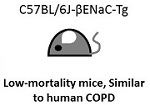
New mouse model helps in search for better COPD and CF treatments
19-Dec-2016
Associate Prof. Tsuyoshi Shuto: Faculty of Life Science
Researchers have succeeded in producing a mouse model that faithfully reproduces the pathologies of two intractable lung diseases, chronic obstructive pulmonary disease (COPD) and cystic fibrosis (CF). Experiments using this new model revealed pathogenesis pathways that matched those found in human COPD and CF. It is a major achievement that could lead to the development of new medication therapies.
-
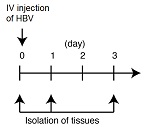
Understanding immune reaction to the hepatitis B virus
24-Nov-2016
Prof. Hiroyuki Oshiumi: Faculty of Life Science
A collaboration of researchers from Japan and Malaysia has further clarified the immune response to hepatitis B virus through in vivo experimentation.
-

Agreement signed between Kumamoto University, Japan and the Institut Pasteur, France
10-Nov-2016
Institute of Resource Development and Analysis
Kumamoto University, Japan and the Institut Pasteur, France held a signing ceremony for institutional cooperation agreement followed by a workshop on reproductive engineering technology at the end of October 2016.
-
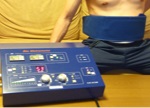
Development of a wearable medical device for type 2 diabetes
26-Oct-2016
Dr. Tatsuya Kondo: Faculty of Life Science
Although effective for the treatment of diabetes, exercise is sometimes difficult for overweight or elderly people. A new wearable medical device developed by Kumamoto University has been found to effect visceral fat loss and improve blood glucose (sugar). The current study reports clinical trial results for optimal use frequency.
-
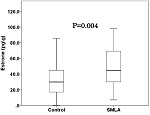
High levels of estrogen in lung tissue related to lung cancer in postmenopausal women
25-Oct-2016
Assistant Prof. Koei Ikeda: Kumamoto University Hospital
Researchers have found that postmenopausal women with multicentric adenocarcinoma of the lung have a higher concentration of estrogen in non-cancerous areas of the peripheral lung than similar women diagnosed with single tumor lung cancer. The research is an extension of their previous investigation into a gene mutation found to be related to an increased risk of multicentric lung cancer.
-

Oral bacterium related esophageal cancer prognosis in Japanese patients
24-Oct-2016
Prof. Hideo Baba: Faculty of Life Science
A type of bacterium usually found in the human mouth, Fusobacterium nucleatum (F. nucleatum), has been found to be related to the prognosis of esophageal cancer in Japanese patients by researchers. The bacteria are a causative agent of periodontal disease and though it can be found among the intestinal flora, it hasn’t been the focus of much research until now.
-

Anti-cancer effects found in natural compound derived from onions
19-Oct-2016
Associate Prof. Yoshihiro Komohara: Faculty of Life Science
Research coming out of Kumamoto University has found that a natural compound isolated from onions has several anti-cancer properties. The compound prevented the proliferation of pro-tumor myeloid cells in both in vivo and in vitro experiments.
-
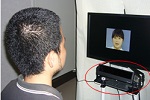
Hearing with your eyes – A Western style of speech perception.
13-Oct-2016
Prof. Kaoru Sekiyama: Faculty of Letters
Which parts of a person’s face do you look at when you listen them speak? Lip movements affect the perception of voice information from the ears when listening to someone speak, but native Japanese speakers are mostly unaffected by that part of the face. Recent research from Japan has revealed a clear difference in the brain network activation between two groups of people, native English speakers and native Japanese speakers, during face-to-face vocal communication.
-
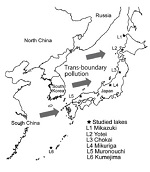
Anthropogenic, trans-boundary lead pollution in Japanese lakes
2-Oct-2016
Associate Prof. Takahiro Hosono: POIE
Anthropogenic, trans-boundary lead pollution from the Asian mainland has been found in lakes around Japan. Professor Takahiro Hosono’s research group compared lead isotope ratios from lake sediment cores to sources around Asia and were able to match the contaminants to areas in Russia and China.
-
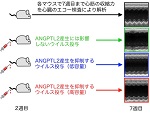
Discovery and gene therapy treatment of a novel heart failure mechanism
28-Sep-2016
Prof. Yuichi Oike: Faculty of Life Science
A key protein that causes heart failure has been revealed through new research from a collaboration based in Kumamoto University, Japan. The protein is secreted by cardiac muscle cells and reduces heart function. Using gene therapy, researchers were able to inhibit the protein production in mice and human iPS cell models.
-

Discovery of blood biomarkers for early pancreatic cancer detection
21-Sep-2016
Prof. Sumio Otsuki: Fuculty of Life Science
Pancreatic cancer is one of the most lethal forms of cancer. Early detection is essential to improve prognoses. Working toward that goal, a collaboration of researchers has discovered proteins in the blood which improve the detection of pancreatic cancer. When used in combination with conventional pancreatic cancer biomarkers, it enables the diagnosis of early stage pancreatic cancer, which was previously thought to be difficult.
-
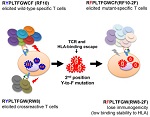
Single HIV mutation induces distinct T cell immune responses
6-Sep-2016
Prof. Masafumi Takiguchi: Center for AIDS Research
A research collaboration between groups in Japan, China, France, Kazakhstan, and the UK has discovered that a single T cell-selected HIV mutation can produce different T cell adaptations. The finding demonstrates that the complexity of the HIV/T cell co-evolution is much higher than previously thought.
-

Kumamoto University's Dr. Hirofumi Kai wins research grant from Alport Syndrome Foundation
30-Aug-2016
Prof. Hirofumi Kai: Fuculty of Life Science
A research group from Kumamoto University, Japan has been awarded an international research grant from the U.S.-based Alport Syndrome Foundation. This marks the first time the foundation has awarded funding to a Japanese research group.
-
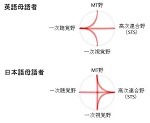
Brain network differences in audio-visual processing between native speakers of English and Japanese
12-Aug-2016
Prof. Kaoru Sekiyama: Fuculty of Letters
Did you know that native Japanese speakers and native English speakers process auditory and visual information differently? A recent Japanese collaboration between Kumamoto University, Sapporo Medical University and the Advanced Telecommunications Research Institute International (ATR) has revealed a clear difference in the brain network activation between these two groups of people during face-to-face speech communication.
-
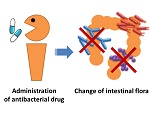
Intestinal flora effects drug response
26-Jul-2016
Prof. Sumio Otsuki: Fuculty of Life Science
Intestinal flora has multiple influences on human health, but research has revealed that it is also likely to have an effect on the body’s response to drugs. Individual changes in the intestinal flora caused by antibacterial and antibiotic drugs may affect the effectiveness and side effects of other medicines.
-
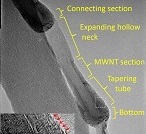
Development of a novel carbon nanomaterial "pot"
12-Jul-2016
Associate Prof. Hiroyuki Yokoi: Faculty of Advanced Science and Technology
A novel, pot-shaped, carbon nanomaterial developed by researchers is several times deeper than any hollow carbon nanostructure previously produced. This unique characteristic enables the material to gradually release substances contained within and is expected to be beneficial in applications such as drug delivery systems.
-
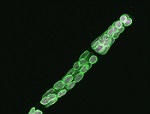
Hidden moss chloroplast ‘wall’ discovered
21-Jun-2016
Prof. Hiroyoshi Takano: Faculty of Advanced Science and Technology
Researchers have succeeded in the world's first visualization of a peptidoglycan “wall” present in the chloroplasts of bryophytes (moss plants). Until now, chloroplasts of green plants were considered to be surrounded only by two envelopes. The results of this research overturns conventional wisdom about the structure of chloroplasts.
-
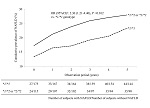
Even light drinkers should watch for fatty liver disease
24-May-2016
Prof. Kentaro Onik: Fuculty of Life Science
People who are genetically predisposed with reduced enzyme activity to breakdown active aldehyde are more likely to develop a fatty liver even if they have no drinking habit.
-

Molecular switch for controlling color and fluorescence
9-May-2016
Associate Prof. Hayato Ishikawa: Faculty of Advanced Science and Technology
Researchers in Japan have developed a molecular switching technique to control the visible color and fluorescent properties of a compound by using hydrogen and oxygen gas. This innovative work is environmentally friendly since it uses the energy from the two gases to switch the color and fluorescence of a compound and produces only water as a byproduct.
-

Simple screening test can predict heart failure severity
25-Apr-2016
Assistant Prof. Yasuhiro Izumiya: Fuculty of Life Science
Researchers have shown that a simple screening method could quickly and easily diagnose the severity of heart disease. The method was originally developed to diagnose sarcopenia, a disease that causes a loss of muscle mass and strength. People naturally have varying degrees of muscle mass and strength loss as they age, but a large loss can be especially bad for patients of cancer or heart disease. Traditionally, sarcopenia was diagnosed via CT or MRI, however, a simple screening test for the disease was recently developed.
-
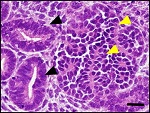
Expansion of kidney progenitor cells toward regenerative medicine
15-Apr-2016
Prof. Ryuichi Nishinakamura: IMEG
The kidney is a difficult organ to regenerate. However, in a big step forward for kidney regeneration research, a collaboration between scientists from Japan and the US has successfully demonstrated a method of increasing kidney progenitor cell proliferation in vitro. This finding will allow researchers to improve the artificially generated number of these cells, which normally disappear before or soon after birth. It is expected to help future research in renal pathogenesis and regenerative medicine.














